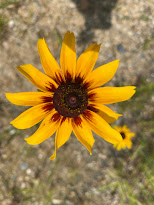Reflections
Stewardship of Masonville Cove Technology has changed the game for many industries including conservation. In order to effectively steward an area we must use all the tools available to us to collect, monitor and enhance the data we can obtain for conservation purposes. This semester I learned about several new sources for information and perspectives to consider when stewarding a site for biodiversity. From using new and different mapping tools for soil quality and what that means for a site, to analyzing the vegetation and biota diversity. Sometimes it is important to take a step back to look at the big picture to understand the small view of a site you may see in person. This semester also reminded me how to break down these complex issues of biodiversity and conservation into simpler terms for people who may not be as familiar with complex systems. Masonville Cove is managed and worked on by several stakeholders meaning communication is essential to work being achieved here. Havin

